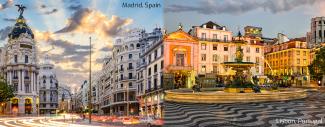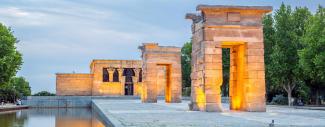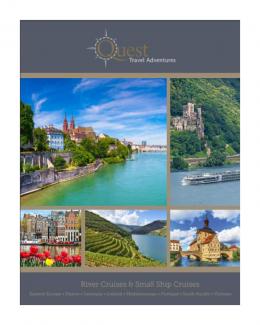10 Fun Facts About Spain That Will Inspire Your Next Adventure

Spain is a country that bursts with color, culture, and charisma. It’s a place where history meets modern energy, where art and architecture blend effortlessly, and where every region offers something unique. Whether you’re exploring Madrid’s grand plazas, Barcelona’s artistic flare, or the Moorish palaces of Granada, you’ll find endless reasons to fall in love with this Iberian gem.
Here are 10 fun facts about Spain that reveal just how fascinating and unforgettable this country truly is.
1. Spain Has 48 UNESCO World Heritage Sites
Spain proudly ranks among the world’s top countries for UNESCO World Heritage Sites, with 48 recognized locations that span its diverse history and landscapes. You’ll find everything from prehistoric cave paintings in Altamira to Gaudí’s architectural masterpieces in Barcelona.
Some of the most famous include the Alhambra Palace in Granada, a dazzling Moorish fortress filled with intricate carvings and tranquil gardens; the Historic City of Toledo, where Christian, Jewish, and Muslim cultures once thrived together; and Seville’s Cathedral and Alcázar, both stunning tributes to Spain’s Golden Age.
2. Madrid Is Home to the World’s Oldest Restaurant
In the heart of Madrid, you’ll find Sobrino de Botín, officially recognized by Guinness World Records as the oldest restaurant in the world, continuously operating since 1725. This charming eatery, with its cozy brick ovens and wooden beams, has served meals for nearly three centuries.
Legend has it that Francisco Goya, the famed Spanish painter, once worked here as a dishwasher before finding fame. Today, visitors can dine on classic Castilian dishes like roast suckling pig and lamb, cooked in the original wood-fired oven, a taste of Spanish history you can savor.
Travel Tip: Book a table in advance, especially for dinner, and ask for a seat on the lower floor for the most atmospheric experience.
3. Flamenco Was Born in Andalusia
Few things capture Spain’s soul like flamenco, an expressive art form of dance, guitar, and song that originated in Andalusia, particularly in Seville, Cádiz, and Granada. Its roots are a blend of Romani, Moorish, and Andalusian folk traditions, creating a performance that’s both deeply emotional and intensely rhythmic.
Today, flamenco remains an integral part of Spanish culture. You can experience its magic firsthand at an authentic tablao in Seville or Granada, where dancers in colorful dresses stomp to the beat of clapping hands and strumming guitars. It’s more than entertainment, it’s passion set to music.
Did You Know? UNESCO declared flamenco a Masterpiece of the Oral and Intangible Heritage of Humanity in 2010.
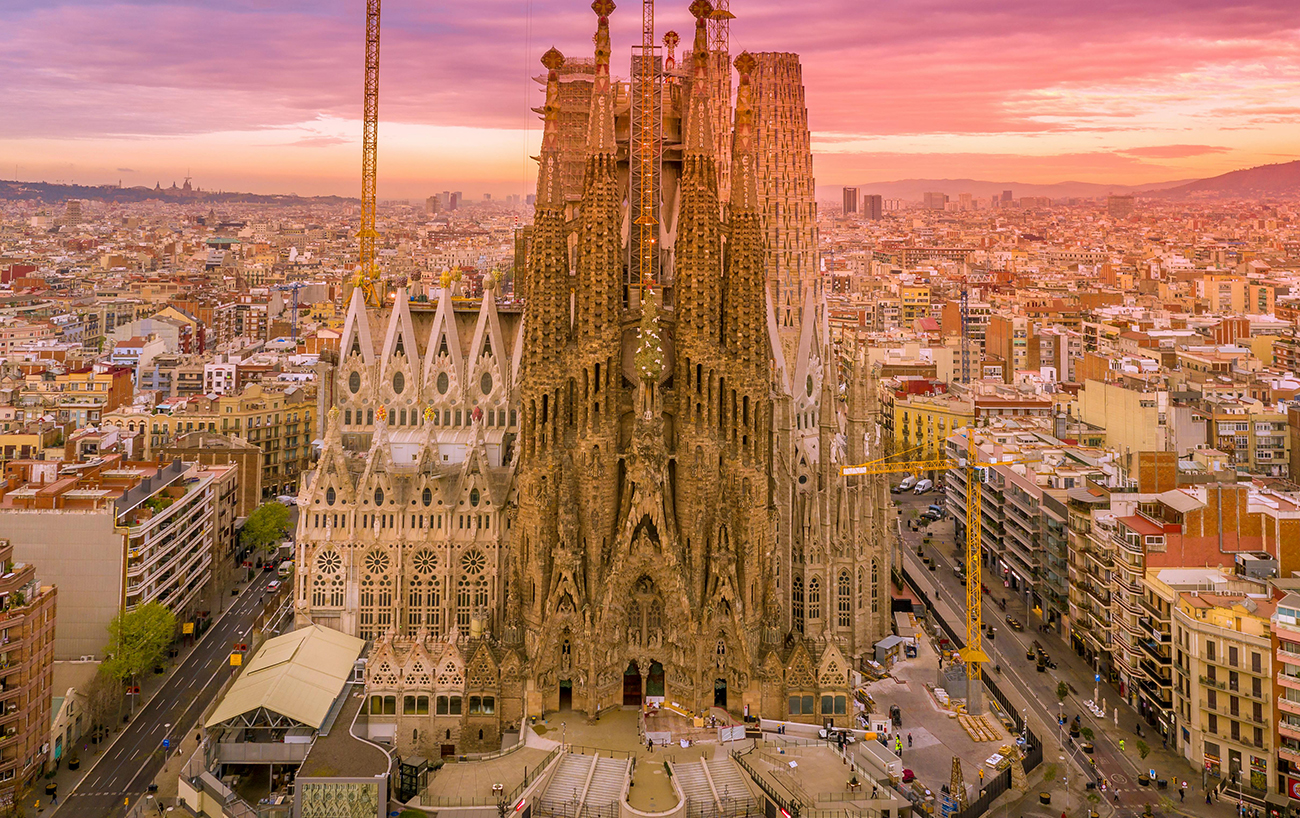
4. Barcelona’s Sagrada Família Is Still Under Construction
One of the most iconic landmarks in Spain, La Sagrada Família in Barcelona, has been under construction for more than 140 years, and it’s still not finished! Designed by the visionary architect Antoni Gaudí, this basilica combines Gothic and Art Nouveau styles in a way that feels almost otherworldly.
Construction began in 1882, and Gaudí devoted the last 15 years of his life entirely to the project. Today, visitors from around the globe marvel at its towering spires, colorful stained glass, and organic shapes inspired by nature. When completed, it will feature 18 towers, representing Christ, the Virgin Mary, the Apostles, and the Evangelists, and will stand as one of the tallest religious structures in Europe.
Travel Tip: Visit early in the morning or late afternoon for the best light inside the basilica. The sun streaming through the stained glass is pure magic.
5. Spain Has Its Own Desert
Tucked away in the province of Almería, in southern Spain, lies the Tabernas Desert, the only true desert in mainland Europe. With its rugged landscapes and dramatic canyons, it looks more like the American Southwest than the Mediterranean coast.
This arid region became famous as the backdrop for hundreds of classic Western films in the 1960s and 70s, including Lawrence of Arabia and The Good, the Bad and the Ugly. Today, you can tour the old movie sets at Mini Hollywood, a theme park that celebrates Spain’s cinematic past, or explore the desert’s raw, natural beauty under the Andalusian sun.
6. Tapas Started as a Practical Snack
Spain’s most famous culinary tradition, tapas, began with a simple, practical idea. The word “tapa” means “lid,” and legend says bartenders once covered glasses of sherry or wine with a slice of bread or ham to keep out flies. Over time, this evolved into the delicious small plates we know today.
Each region of Spain has its own tapas style. In Seville, you might find creamy croquettes and spicy chorizo, while Granada is famous for serving free tapas with every drink. In Madrid, locals gather at lively bars to sample everything from garlic shrimp to jamón ibérico, a proper Spanish social ritual.
Travel Tip: Order a few tapas at a time and share them with friends. It’s the Spanish way to turn a simple meal into a long, joyful evening.
7. Madrid Sits at the Exact Center of Spain
Madrid isn’t just Spain’s capital. It’s also located in the geographic center of the country. This central point, marked by a plaque called “Kilómetro Cero” in the famous Puerta del Sol square, is the spot from which all of Spain’s major roads are measured.
The city’s central position makes it a perfect base for exploring other regions by train or car. From Madrid, you can reach Toledo, Segovia, or Ávila in under an hour, each packed with medieval charm, castles, and UNESCO-listed sites.
Did You Know? Locals say that standing on the “Kilómetro Cero” plaque brings good luck. It’s one of Madrid’s most photographed spots!
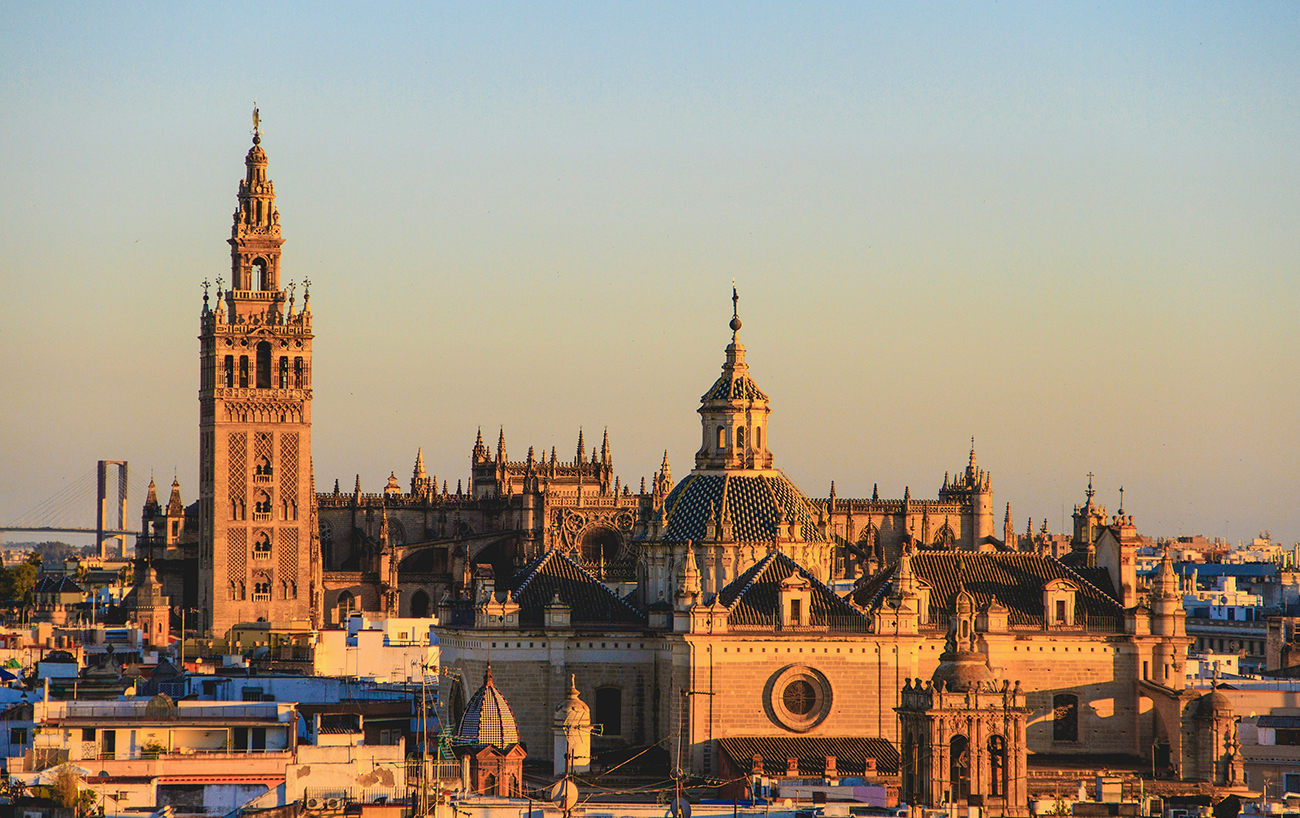
8. Seville’s Cathedral Is the Largest Gothic Cathedral in the World
Dominating the skyline of Seville, the Cathedral of Seville (Catedral de Santa María de la Sede) is not only the largest Gothic cathedral in the world but also one of Spain’s most magnificent monuments. Built in the 15th century on the site of a former mosque, it features a vast interior filled with gilded altars, stunning stained glass, and artistic treasures.
Inside, you’ll find the tomb of Christopher Columbus, while outside stands the Giralda Tower, originally a minaret from the mosque that once stood there. Climbing to the top rewards visitors with sweeping views over Seville’s rooftops and orange-lined streets.
Travel Tip: Visit in the late afternoon to climb the Giralda just before sunset. The golden light over Seville is breathtaking.
9. Spain’s Beaches Stretch for Nearly 5,000 Miles
With more than 8,000 kilometers (5,000 miles) of coastline, Spain offers endless opportunities for beach lovers. Whether you prefer the lively beaches of Barcelona’s Barceloneta, the golden sands of the Costa del Sol, or the rugged beauty of Galicia’s wild Atlantic coast, there’s something for everyone.
For those looking for a tropical escape, Spain’s islands deliver in style. The Balearic Islands (Mallorca, Menorca, and Ibiza) boast turquoise waters and chic Mediterranean charm. At the same time, the Canary Islands offer volcanic landscapes and year-round sunshine.
Did You Know? Spain has over 600 Blue Flag beaches, more than any other country in the world, meaning they meet the highest standards for cleanliness and water quality.
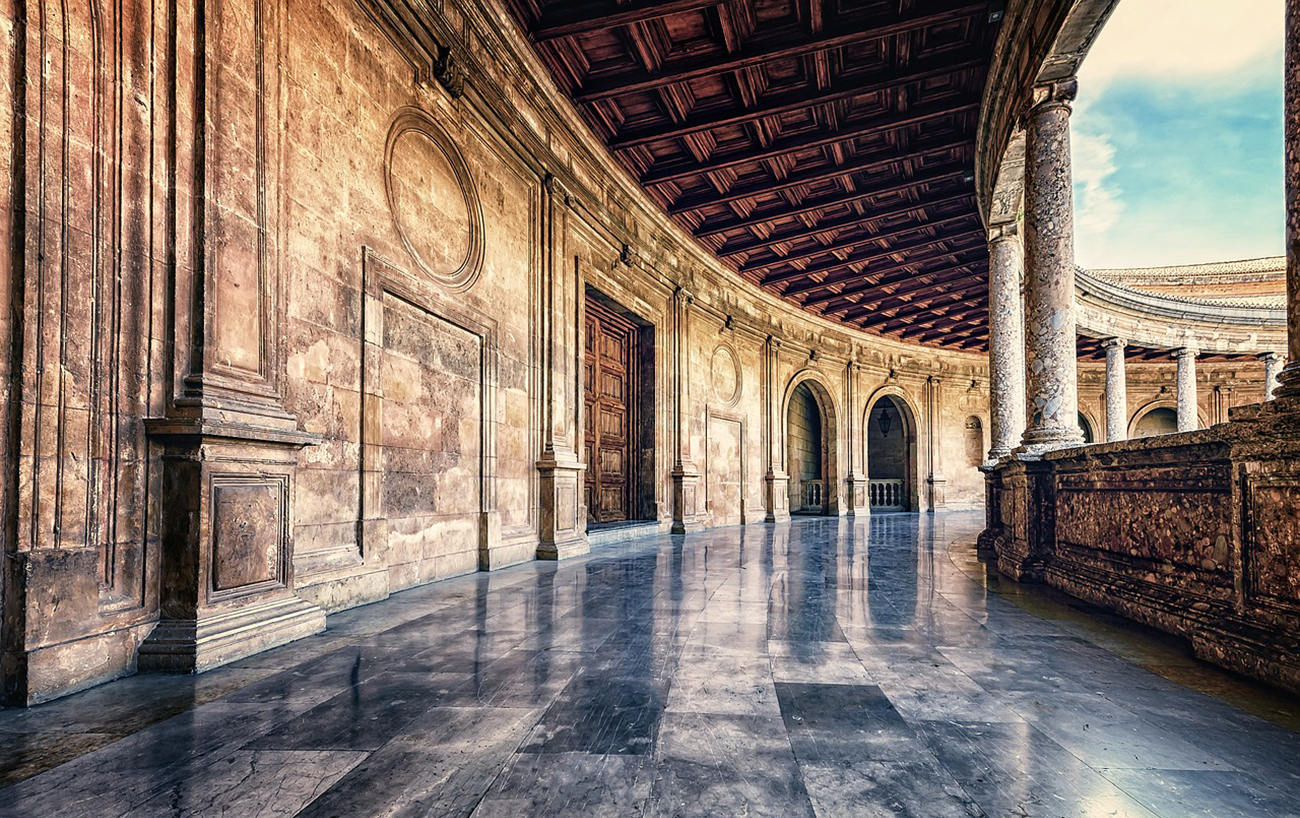
10. The Alhambra in Granada Was Once a Royal Palace
Rising majestically above Granada, the Alhambra is one of the most exquisite examples of Moorish architecture in the world. Built in the 13th century by the Nasrid dynasty, this sprawling palace complex features intricately carved stucco walls, tranquil courtyards, and reflecting pools that capture the surrounding Sierra Nevada Mountains.
The Alhambra was once home to Muslim sultans who ruled Andalusia before the Christian Reconquista. Today, it stands as a symbol of Spain’s rich cultural fusion, attracting millions of visitors each year who come to wander its ancient halls and fragrant gardens at sunset.
Travel Tip: Book your tickets well in advance as visitor numbers are limited daily, and sunset entry times sell out fast!
Experience Spain with Quest Travel Adventures. Our expertly curated itineraries showcase the best of Spain’s art, architecture, and cuisine. Our most popular trips include Madrid Discovery, Barcelona & Valencia, Madrid, Seville and Granada, Royal Madrid & the Canary Islands, and Hidden Jewels in Barcelona and the Canary Islands.




